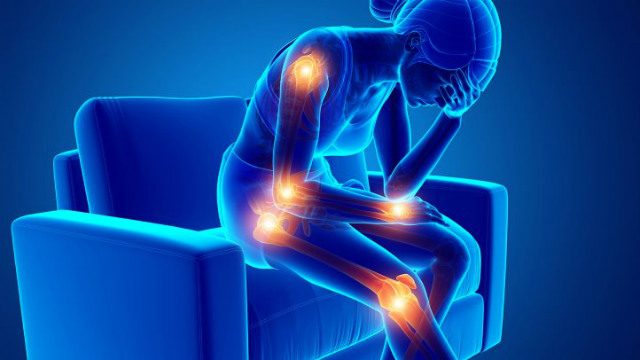Pain Management

Pain is an uncharacterized sensation that cannot be seen by others and it is impossible to experience the feelings of a pained person. Pain is often described as “a warning issued by the body when we are harmed or threatened. However, it may not be the case always. For example, to those people who have been amputated, the pains they felt before the amputation were already imprinted in their brains, so even after the amputations were done, they still felt the existence of pains. Probably a message stored in the brain still controlling their feelings of pain continuously.
Pain is divided into nociceptive pain (acute pain) and neuropathic pain. Nociceptive pain is associated with noxious sensory nerves, and the sensation produced when an external factor harms or threatens the body part. Neuropathic pain is caused by damage or malfunction of the nervous system.
To distinguish these two kinds of pain, it can be further differentiated by the duration of pain. Pain is a manageable condition, of which it can be divided into long-term and short-term types.

Pain signals health problems
The duration and continuity of the pain is the basis for the diagnosis. For example, the pain caused by a burn or hitting a tiny bone, may cause acute short-term pain at first, but it may also develop into chronic long-term pain and become arthritis or fibromyalgia. About 7.1% of adults in Malaysia have faced chronic pain problems.
The pain caused by a general injury can be cured after wound is healed, and it belongs to acute pain; whereas continuous or chronic pain is caused by a disorder of the nervous system. Peripheral neuropathy caused by diabetes, back pain and fibromyalgia can become a lifetime medical problem. Even if the injured cells have been repaired, yet about 10 to 20% of people are still sensing that their pains.

Many people think that pain is just a feeling of the body. Pain can become economic burdens of patients too. Once the pain changes into chronic pain, patient starts to experience depression, fatigue, loss of appetite, and mood swings until he or she unable to work.
The average person’s understanding of pain is only superficial. Not knowing that pain can be a signal of their health problems. Different types of pain will give different kind of symptoms. Pains can be described with various expressions, for instance, prick, burns, shock, tingling, etc. These pains can be managed and improved by doctors after diagnosis is made.
The most common pain is injury-induced trauma, peripheral nerve compression, infection (AIDS), metabolic disease (diabetes mellitus), inflammation (multiple sclerosis, rheumatoid arthritis), vegetation, drugs and toxins (alcoholism, arsenic poisoning), genetic problems, and idiopathic diseases.

Due to the superficial understanding on pains, many people merely go to pharmacy outlets and buy painkillers on their own and use them as the first line of treatment. However, this may not work for all types of pains, especially neuropathic pains, which requires special drugs to treat.
Although pain gives uncomfortable sensations, it is better to feel pains after an injury, which proves that the body’s protective function remains sound. Pain tells patient where the origin of injury before kickstarting body’s self-repair process. If there is no pain after an injury, it means that body has lost its self-protective functions, obviously this is not a good sign!
Neuropathic pain is akin colourless and odourless poisons, it cannot be seen or touched by other people. Pain specialists must pass all aspects of consultations with instrumental assistance before diagnosing a patient either suffering neuropathic or acute pain.
Acute pain is very easy to resolve. Once patients start taking their pain medicines, then pains will subside eventually, along with the healing of wounds. In contrast, neuropathic pain will pose long-term problems. Besides getting helps from doctors, patients may need to take some pain management courses for overcoming their pains in long run.
When diagnosing a patient, doctor can usually know that it is either acute or neuropathic pain on first consultation. Firstly, the patient will be asked about the pain condition, frequency, time, and location of the pain. The patient is required to describe the feeling of “pain” with detailed manner, including giving descriptions whether it is a pain akin knife-cut or burns, tears, electric shocks, etc. Each kind of pain has different therapies.
Then doctor will do pain characterisation tests, physical examinations, especially neurological assessments, supplementary diagnostic tests, and assess the impact of pain on patient function and quality of life.
No matter which part of the body is injured, normally it will recover within three months and the pain will disappear then. If patient does not recover, it will evolve into chronic pain. Perhaps pain-sensing-system has been impaired, even if there is no injury, the patient’s nervous system continues to convey pain messages.
The International Association for Neuropathic Pain or Neuropathy Research is working with the World Health Organization to classify idiopathic pain in the International Classification of Diseases and Related Health 11 (ICD-11), categorized by the duration and index of pains. This implies that chronic pain has developed into a health problem.
From an outsider’s point of view, when a wound is healed then pain should disappear as well. Sometimes, even if doctor sees that a wound has been healed and surgical operation has been done successful, but patient still believes that there is still “something” lingering there. Hence, pain still exists.
Of course, probably there may be ‘something’ still exist, such as inflammation or other reasons. Approximately 10 to 20%, even 30% of the patients still feel their pains after surgeries are done successfully, yet their doctors could not identify any reason. Under such circumstance, patients must accept the existence of their pains and learn how to cope and manage such pains in long term.

Do not ignore pain and take it lightly
There are patients who complained about their pains regularly, but they could not find out the actual causes. Some doctors may refer this kind of patients to psychiatric department. Doctors may opine that the pains of these patients are produced by their own hallucinations. Therefore, if any person suffers from pain for a long period, he or she has the responsibility to see doctor and provide the full details about pain, so he or she can prove to doctor that such sensation is not caused by own hallucinations. As such, doctor will refer the patient to pain management department instead.
The pain of unknown origin (idiopathic pain) is probably related to bone or muscle pains. When it’s so painful until patient unable to walk, or face can feel hurts when touching water. Idiopathic pains do not happen at the sites where pains are usually occurred, for example back and neck.
The common chronic pain areas are coming from the lower half of the spine to the feet, because these areas are considered the most easily degraded areas of body, and the compression of the nerves can cause the area from back to the feet, getting the electric shock and burning pains and unlike acute pain, where it is normally occurring in a single area.

Three-pronged approach is most effective
Pain management does not rely on injections of analgesics or anesthetics to relieve pain. Relaxation and exercise are also regarded as effective treatments.
At the pain management clinic, doctors have seen all kinds of chronic pain patients. When they meet patients for the first time or start treatment, normally patients will ask doctors to give them analgesics via oral or injection ways. Of course, doctors must clearly explain to patients that this approach is merely giving temporary relief. After all, pain management clinic is not just a clinic tasked to offer painkillers only.
Analgesics are like anaesthetics, temporarily blocking pains, altering the chemical response of nervous system, but pains still can come back after the drug effects subside. Hence, painkillers alone cannot solve the pain problems entirely.
A lot of patients with chronic pain problems are related to lack of exercise. Once they start to move and release endorphins into the brain, it can exert analgesic effects, relax the body and mind, and relieve pain. Therefore, psychiatrists are also playing vital roles in pain management clinics.
Drugs, exercise and self-management are the supporting tools for pain management, of which they must be managed with 3-pronged approach. Patients are not encouraged to rely solely on drugs to manage pain and develop drug dependence, because the common cause of chronic pain is stress-related. Doctors should help their patients to find out the root causes of stress and then teach them to manage it better.
When patients start getting treatment, they may feel very painful, yet they must do some exercises that bringing pains during early stage of treatment. Some patients will ask whether massage can be used instead. Keep in mind, massage is just a passive treatment, certainly it is better for patients to combine both active and passive treatments together, in order to achieve desired results. In other words, patients must exercise on their own besides receiving massage.
Other than doing exercise, patients are also encouraged to do yoga and tai chi, since these activities can also bring some anti-depressant effects. As long as patients start exercising twice a day, it is certainly helpful to relieve their chronic pains.





